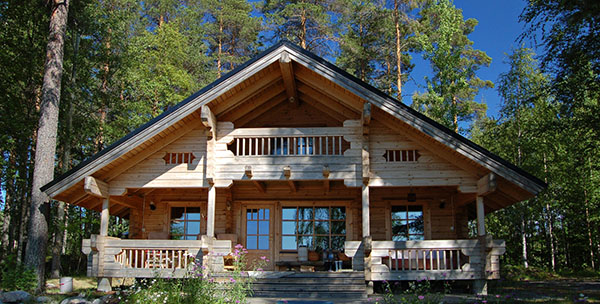When it comes to closing up the cottage, every cottage owner has their own checklist and methods but it’s useful to review some best practices and perhaps add a few additional tasks to your to-do list to make sure that next spring, there aren’t any unwelcome surprises.
In Canada, the top causes of cottage damage are wind and water. Fortunately, the risk of damage can be reduced by taking a few simple steps at the end of the season.
“There are a few main areas to focus on when closing up the cottage before an Ontario winter hits,” says Phil Dorner, president of the Ontario Real Estate Association.
“By tailoring your to-do list to take care of the most important areas first, you will be well on your way to ensuring a smooth winter and an easier time, come spring,” adds Dorner.
Here are the most important tasks to take care of at the cottage this fall:
- Drain the pipes: Make sure all water is removed by opening all taps and valves. If your cottage is not winterized, the Canada Safety Council recommends filling supply pipes with non-toxic anti-freeze and wrapping pipes at key junction points to help protect against the cold.
- Inspect your roof: A leaky roof can cause a lot of water-damage. Replace any missing or broken shingles. Make sure trees are trimmed so that wind and snow do not cause them to damage your cottage.
- Electricity: If shutting the electricity off completely, Hydro One recommends turning off all appliances, the water heater and electrical room heaters before turning off the main switch at the electrical panel. If leaving your electricity on (for a security system or lighting) turn off the power supply to your major appliances at your main panel and shut off the power to any space heaters.
- Fireplace and woodstove: Make sure your fireplace damper is closed to prevent animals from getting in. Block off the flues, stovepipes and chimneys. Chimneys from fireplaces or woodstoves should be professionally checked to ensure they don’t have hazardous amounts of creosote.
- Empty refrigerator and cupboards: Clean and defrost the fridge, leaving the door open to keep it fresh. Pack up the cupboards, including dry food and canned goods.
- Walk through: Make sure that all utilities and appliances are unplugged and any potential fire hazards are removed (old newspapers, chemicals, etc.)
“Once you’ve taken care of the most important tasks, you will be able to turn your attention to the remaining cleaning and packing up, and of course the final goodbye,” says Dorner.
If possible, have a neighbour or friend check up on your place periodically throughout the winter, this will provide some additional peace of mind.
 Pride News Canada's Leader In African Canadian & Caribbean News, Views & Lifestyle
Pride News Canada's Leader In African Canadian & Caribbean News, Views & Lifestyle





